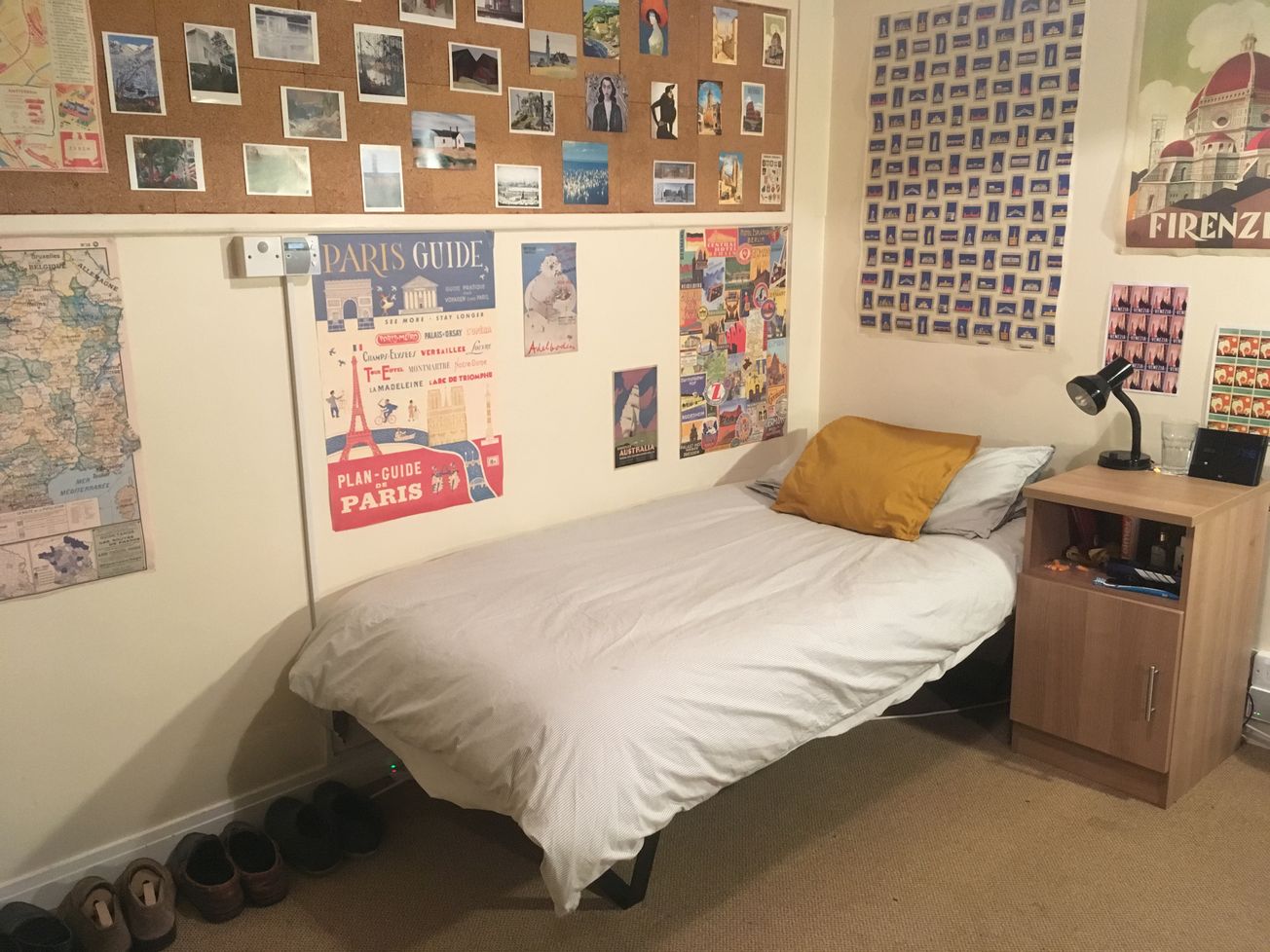By Xander Brett, First Year, History of Art and French
From the halls of Badock, the lessons in an unappreciated artform to give your halls' bedroom a homlier touch.
Having spent five years at boarding school, I’ve had somewhat of a head start when it comes to turning institutional rooms from hovel to haven. But, while covering the walls of one’s dorm with posters and torn out magazine pages was accepted, indeed expected, at school, coming to university, I needed a revamp. So I spent much of my gap year throwing out old posters and postcards and sweeping IKEA for new material.
As a massive Scandophile, stepping into IKEA is always an exhilarating experience. But, even if you don’t enjoy spending hours in Swedishness like me, IKEA is still a great place to source decoration for a hall room, house or flat. It’s comprehensive, good quality and affordable. Certainly it can be an intimidating experience, following illuminated arrows through a warehouse with no natural light, trying not to knock over glass objects, but that only refines your concentration.
Don’t allow yourself throw everything you like into the trolley. Instead, find the first thing you like and, from then on, look for objects of a similar style and / or colour scheme. If you like a certain yellow pillow, for example, look for a duvet that will look good with it, not just one you think looks nice. Keeping asking yourself if the objects will work with one another, and the room as whole. It’s a long and often boring task, but it’s one that’s worth doing. If you don’t, your room will only end up looking like an IKEA storeroom itself, full of unrelated, if appealing, objects.
Having said that, there’s no point turning your room into a showroom. University is busy, and you will likely spend most of the day away from your room. Having somewhere that’s just ‘you’ to return to is, therefore, essential. Reserve a noticeboard or wall for your own photos, postcards, theatre tickets and newspaper cut-outs. Most of what you put up will be accumulated over the course of the year. Having just arrived in Bristol, a wall of my room is covered with things like bus timetables, maps, calendars and French grammar charts. But I’ve also put up things that mean something personally: posters and a collection of postcards from exhibitions I’ve enjoyed.
Don’t worry if these objects don’t fit in with your general scheme and, most importantly, don’t worry if you think people won’t find them cool. People will respect your individuality and will find it weirder to hang out in a room with bare walls than one covered in a seemingly random collection of images. As long as they mean something to you, it doesn’t matter. When I move out of halls next year, most of my posters and postcards will come with me, and I look forward to greater space to spread them over.
My rug and reading light will also come with me. These objects are synonymous with a cosy room. When it’s dark enough to close the curtains, switching on a reading light transforms both your mood and your room. Equally, a good rug or mat will cover up nasty flooring, and any bare walls can be transformed by hanging up a dressing gown or coat. Of course, you can always print off more posters if you need to, and I’m told for girls, hanging fairy lights or a string of photos from the wall also livens up remaining bare bits.
Another nice idea is to design your own headboard for your bed, or a screen (if your room is big enough) to create a divide between your ‘study’ and ‘bedroom’. You might look a bit odd carrying planks of wood around the Triangle, or taking it onto the bus, but once you get back, decorating it would be fun, and a chance to create something truly individual. Because that, after all, is the aim.
Featured Image: Xander Brett / Epigram






